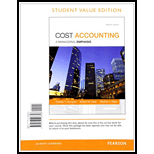
Variance analysis is the process of ascertaining the deviations between actual and planned output.
Favorable Variance:
A circumstance that happens when a foreseen cost is higher than its real cost, or when expected income is lower than real income
Unfavorable variance:
Unfavorable variance is the difference between the actual and planned output which is harmful for the company like actual cost incurred is more than the standard or planned cost or the revenue is less than the planned revenue.
Direct Material Price Variance:
Direct material price variance in the difference between the budgeted per unit cost of raw material and the actual per unit cost multiplied by the number of units purchased.
Direct Material Efficiency Variance:
Direct material efficiency variance is the difference between the budgeted quantities and the actual quantities purchased at a specific price.
Material Price Variance:
Material price variance is the difference between the budgeted and the actual purchase price of the material purchased. It is calculated to ascertain the efficiency of the purchase department.
To determine: For each independent scenario indicate whether each of the manufacturing variances will be favorable or unfavorable or CBD (cannot be determined).
Want to see the full answer?
Check out a sample textbook solution
Chapter 8 Solutions
Cost Accounting, Student Value Edition Plus MyAccountingLab with Pearson eText -- Access Card Package (15th Edition)
- A company has three divisions, X, Y, and Z, with the following financial data: • Sales for Division X: $1,800,000 Investment in assets for Division X: $630,000 What is the asset turnover (AT) for Division X? A. 1.43 B. 1.60 C. 1.67 D. 2.86 E. 3.33arrow_forwardStandard cost per unit is calculated as: A. standard rate per hour multiplied by standard time. B. standard price multiplied by standard quantity. C. Standard quantity divided by standard price. D. service units used divided by available service units.arrow_forwardGeneral accountingarrow_forward

 AccountingAccountingISBN:9781337272094Author:WARREN, Carl S., Reeve, James M., Duchac, Jonathan E.Publisher:Cengage Learning,
AccountingAccountingISBN:9781337272094Author:WARREN, Carl S., Reeve, James M., Duchac, Jonathan E.Publisher:Cengage Learning, Accounting Information SystemsAccountingISBN:9781337619202Author:Hall, James A.Publisher:Cengage Learning,
Accounting Information SystemsAccountingISBN:9781337619202Author:Hall, James A.Publisher:Cengage Learning, Horngren's Cost Accounting: A Managerial Emphasis...AccountingISBN:9780134475585Author:Srikant M. Datar, Madhav V. RajanPublisher:PEARSON
Horngren's Cost Accounting: A Managerial Emphasis...AccountingISBN:9780134475585Author:Srikant M. Datar, Madhav V. RajanPublisher:PEARSON Intermediate AccountingAccountingISBN:9781259722660Author:J. David Spiceland, Mark W. Nelson, Wayne M ThomasPublisher:McGraw-Hill Education
Intermediate AccountingAccountingISBN:9781259722660Author:J. David Spiceland, Mark W. Nelson, Wayne M ThomasPublisher:McGraw-Hill Education Financial and Managerial AccountingAccountingISBN:9781259726705Author:John J Wild, Ken W. Shaw, Barbara Chiappetta Fundamental Accounting PrinciplesPublisher:McGraw-Hill Education
Financial and Managerial AccountingAccountingISBN:9781259726705Author:John J Wild, Ken W. Shaw, Barbara Chiappetta Fundamental Accounting PrinciplesPublisher:McGraw-Hill Education





